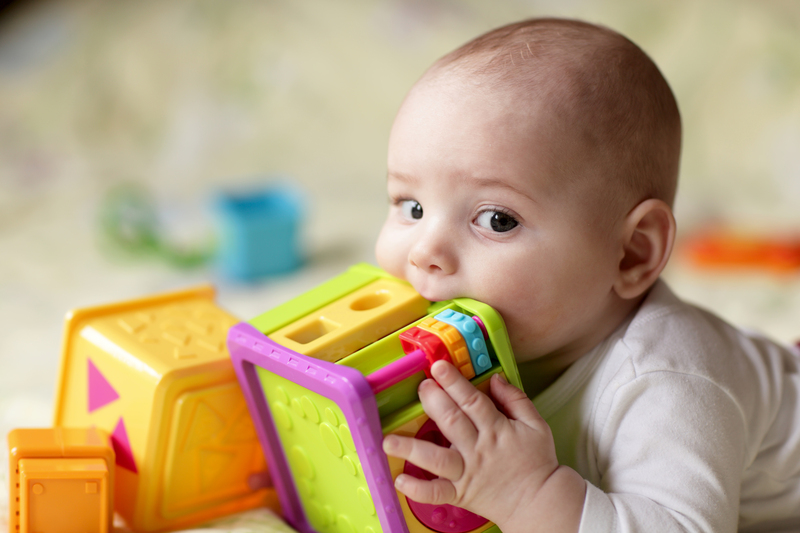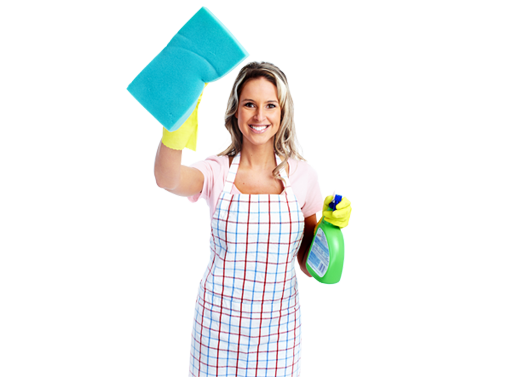Jewellery Cleaning Techniques for Shining Success
Posted on 24/06/2025
Jewellery has always held a special significance in our lives. Whether it's a dazzling diamond ring, a cherished gold necklace, or a treasured piece with sentimental value, keeping your jewellery sparkling is key to maintaining both its beauty and value. Proper jewellery cleaning techniques not only restore shine but also help prolong the life of your precious adornments. If you've ever wondered how to keep your jewellery looking as good as new, read on for a comprehensive guide on jewellery cleaning techniques that promise shining success.
Why Is Jewellery Cleaning Important?
Caring for your jewellery goes beyond mere aesthetics. Over time, oils from your skin, lotions, and daily dust can accumulate on jewellery surfaces, dulling their sparkle and potentially causing long-term damage. Regular cleaning helps prevent tarnish, removes harmful residues, and allows you to inspect pieces for loose prongs or worn settings, minimizing the risk of losing precious stones.
Key Benefits of Regular Jewellery Cleaning
- Restores Brilliance: Removes grease and dirt to maximize shine.
- Prolongs Longevity: Protects finishing and structural integrity.
- Prevents Tarnish: Especially critical for silver and other susceptible metals.
- Maintains Value: Clean, well-maintained jewellery retains its value better over time.

Understanding Different Types of Jewellery
Before diving into various jewellery cleaning techniques, it's crucial to recognize that not all materials are created equal. Each type of jewellery--whether diamond, gold, silver, platinum, or gemstone--requires a specific approach to avoid causing unintended damage.
Common Jewellery Materials and Their Cleaning Needs
- Gold: Resistant to tarnish but prone to scratches; needs gentle cleaning.
- Silver: Susceptible to tarnish and should be polished regularly.
- Platinum: Durable but can develop a patina; gentle cleaners work best.
- Diamonds: Require cleaning to remove oils and enhance sparkle.
- Gemstones: Each stone type (emerald, opal, sapphire) has specific requirements. For example, pearls are particularly delicate.
Top Jewellery Cleaning Techniques for Sparkling Results
1. Basic Home Cleaning Methods
Soap and Water Method
A mild solution of warm water and gentle dish soap is suitable for most gold, platinum, and diamond jewellery. Follow these steps:
- Mix a few drops of mild dish soap in a bowl of lukewarm water.
- Soak your jewellery for 15-20 minutes.
- Use a soft-bristled toothbrush to gently scrub hard-to-reach areas.
- Rinse thoroughly under running water.
- Pat dry with a lint-free cloth.
Note: Avoid this method for porous gemstones (like opals or pearls), which may absorb water and get damaged.
Baking Soda and Water Paste
For silver pieces, a paste made of baking soda and water works wonders:
- Mix three parts baking soda to one part water to form a paste.
- Apply gently using a soft cloth or sponge.
- Rinse thoroughly and dry with a soft towel.
This technique is best for removing tarnish from silver jewellery and restoring a brilliant finish.
Aluminium Foil and Baking Soda Bath
This is a popular DIY method for cleaning heavily tarnished silver:
- Line a glass or ceramic bowl with aluminium foil.
- Place your silver jewellery on the foil.
- Sprinkle generous baking soda over the items.
- Pour hot (not boiling) water to cover everything.
- Let it sit for a few minutes; a chemical reaction will remove tarnish.
- Rinse and dry the jewellery.
Important: Avoid using this method on jewellery with glued components or delicate stones, as it can loosen settings and damage gems.
Vinegar and Baking Soda Solution
For a greener approach, combine vinegar and baking soda for silver:
- Soak tarnished silver jewellery in half a cup of white vinegar mixed with two tablespoons of baking soda.
- Let it sit for two to three hours, then rinse and dry thoroughly.
This method efficiently brightens silver without harsh chemicals.
Toothpaste Technique
Non-gel toothpaste is mildly abrasive and can clean certain jewellery types:
- Apply a small pea-sized amount on a soft toothbrush.
- Gently scrub the jewellery.
- Rinse thoroughly and buff dry.
Warning: Skip this method for soft gemstones, pearls, gold-plated, or antique jewellery.
2. Professional Jewellery Cleaning Methods
Some pieces require more than just home remedies, especially vintage or intricate items. Professional jewellery cleaning techniques offer deeper and safer cleaning for these cherished belongings.
Ultrasonic Cleaning
Jewellery stores often use ultrasonic cleaners that emit high-frequency sound waves to dislodge dirt and grime.
- Extremely effective for hard gemstones and dense metals like gold and platinum.
- Not suitable for soft gemstones (emeralds, opals, pearls) or delicate pieces.
- Home ultrasonic cleaners are available but research compatibility with your jewellery first.
Steam Cleaning
Steam cleaning uses pressurized steam to remove embedded dirt and bacteria from jewellery surfaces, especially intricate filigree or hard-to-clean crevices.
- Provides deep cleaning with no harsh chemicals.
- Ideal for diamonds and sturdy gemstones/metals.
- Not recommended for organic gems (pearls, coral) or fracture-filled stones.
Jeweller's Polishing
Professional jewellers have access to polishing wheels and specialized compounds that restore shine and remove scratches from metal surfaces.
- Particularly beneficial for gold and platinum jewellery that has lost its lustre.
- Performed infrequently (once or twice a year) to maintain jewellery integrity.
How to Clean Specific Types of Jewellery
Gold Jewellery Cleaning Techniques
Gold is naturally resistant to tarnish, but dirt and oil can dull its shine. Use the soap and water method, and avoid abrasive cleaners. For textured or engraved gold pieces, gently brush with a soft toothbrush to remove debris.
Silver Jewellery Cleaning Techniques
Silver is prone to tarnishing, turning it dull and grey. Use specialized silver polishes or employ the baking soda and aluminium foil method. For daily maintenance, regularly buff with a soft silver cloth to keep tarnish at bay.
Diamond Jewellery Cleaning Techniques
Diamonds attract oil and grime easily. Soak diamond rings in warm water and dish soap, then scrub gently. For extra sparkle, finish with a soft cloth polish. Avoid chlorine or bleach, which can erode diamond settings.
Pearl & Delicate Gemstone Cleaning
Pearls and gems like opals and turquoise are soft, porous, and very sensitive to acids, heat, and moisture. Wipe them down with a damp cloth after wearing. Avoid soaking or ultrasonic cleaning. Always store pearls separately from harder gems to prevent scratches.
Costume Jewellery Cleaning
Costume jewellery often contains glued-on stones and imitation metals. Use minimal water and never soak. Wipe gently with a damp cloth and dry completely. Avoid harsh chemicals which could destroy finishes or loosen glue.
Jewellery Cleaning Mistakes to Avoid
Proper care will ensure your jewellery cleaning process is successful. Avoid these common mistakes:
- Using harsh chemicals (bleach, ammonia) which can etch or pit metal and stones.
- Soaking soft or porous gemstones which absorb water or solvents.
- Using rough or abrasive items such as steel wool or hard brushes which can scratch metals/gems.
- Cleaning damaged pieces without professional inspection, risking further breakage or loss.
- Ignoring care instructions from jewellers, especially for designer or vintage pieces.
Essential Jewellery Cleaning Tools and Supplies
- Soft-bristled toothbrush: For getting into tiny crevices.
- Jewellery cleaning cloth: Specially treated to remove tarnish and polish metals.
- Mild dish soap: Safe for most metals and hard stones.
- Non-abrasive polishing cloth: For daily maintenance.
- Plastic or ceramic bowls: Prevent accidental scratching during soaking.
- Baking soda, white vinegar, aluminium foil: For DIY silver brightening.
- Professional jewellery cleaner solutions: Available for various gemstones and metals.
Jewellery Cleaning Myths Debunked
- Myth: Toothpaste is safe for all jewellery. While effective for some metals, it's too abrasive for gold, pearls, and soft stones.
- Myth: All jewellery can be cleaned the same way. Each metal and gemstone has unique care needs.
- Myth: Ultrasonic cleaners are a universal solution. Not suitable for all gemstone types and delicate settings.
- Myth: Frequent cleaning damages jewellery. As long as proper methods are used, regular gentle cleaning is beneficial.

Tips for Keeping Your Jewellery Clean and Shining Longer
- Store individually: Keep pieces in separate pouches or boxes to avoid scratches.
- Remove before activities: Don't wear jewellery during swimming, cleaning, or exercising to avoid chemical and physical damage.
- Avoid direct sunlight and heat: Certain stones and finishes may fade or degrade under prolonged exposure.
- Clean after wear: Especially for pieces worn close to skin, like rings and bracelets.
- Schedule professional check-ups: Have intricated, valuable, or heirloom pieces checked by a jeweller annually for loose stones or wear.
Summary: Ensuring Shining Success in Jewellery Care
Proper jewellery cleaning techniques are essential for maintaining sparkle, value, and longevity. Using the right methods for each type of jewellery ensures your favourite pieces remain brilliant and in top condition year after year. From home remedies with soap and baking soda to professional ultrasonic and steam cleaning, there are safe approaches for every budget and material. Avoid common mistakes and follow storage and maintenance tips to enjoy the timeless beauty of your adornments. Shining success isn't just about appearance--it's about preserving memories and investments for generations to come.
Frequently Asked Questions: Jewellery Cleaning Techniques
- How often should I clean my jewellery?
For frequently worn pieces, clean every few weeks. For delicate or less-used items, once every few months is sufficient. - Is it safe to use jewellery cleaning solutions at home?
Yes, if you select solutions designed for your specific metal or gemstone, and follow manufacturer instructions. - Can I clean antique jewellery at home?
Antique or fragile pieces are best left to jewellers to prevent damage.
Remember: Understanding and applying the right jewellery cleaning techniques is the key to keeping your beloved adornments sparkling for years. With some care, knowledge, and the right tools, your jewellery can showcase its full brilliance and tell your unique story every time you wear it.





